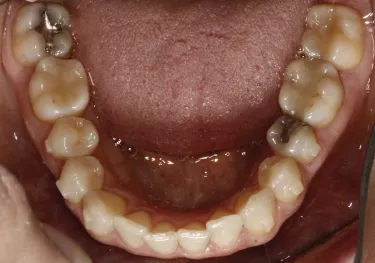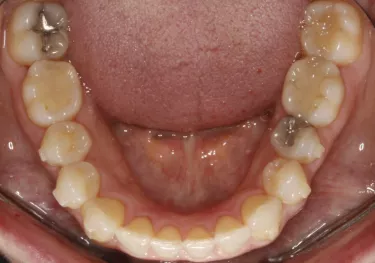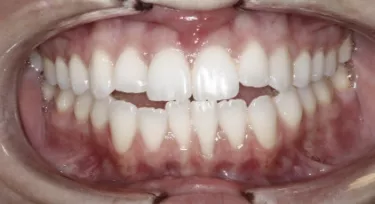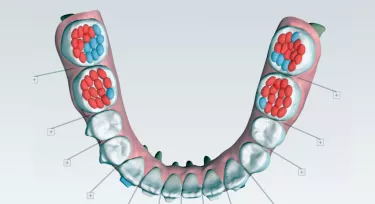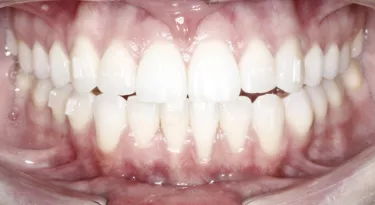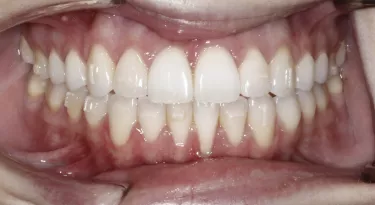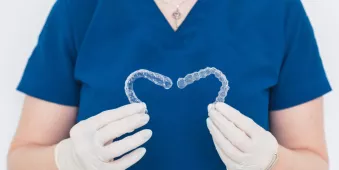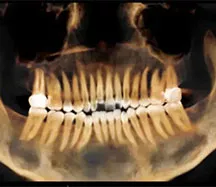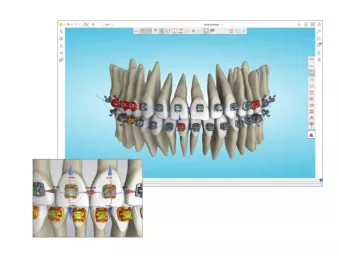Control and Flexibility in One
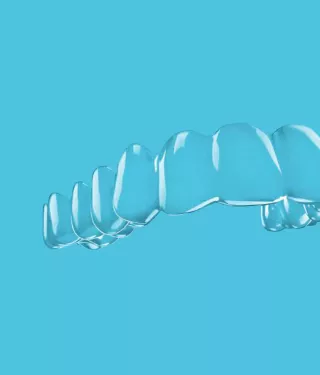
The latest update to Ormco Corp’s Spark Clear Aligner System introduces a new clear aligner material designed specifically for the finishing stage.
Ormco Corp recently released the latest update to its Spark Clear Aligner System. With Release 10, the company introduced a number of new features and enhancements to both the aligners and the software. Orthodontic Products spoke to Rick Matty, vice president and general manager of product innovation, to learn more from the company, and Bill Dischinger, DMD, an orthodontist, to find out how this new update is impacting his clinical cases.
Orthodontic Products: This is the tenth update to the Spark Clear Aligner. What was the motivation for this update?
Rick Matty: We want our doctors to be incredibly successful using Spark Clear Aligners. This means we must constantly innovate to bring them new features that give them more start-to-finish control and flexibility. Spark’s new features in Release 10 are designed to provide more predictable and efficient treatment planning.
OP: What are the key upgrades that orthodontists will find with Release 10?
Matty: The most significant features for R10 include a new material for refinements/finishing, more complete diagnosis and treatment planning for doctors using CBCT scans, posterior bite turbos to expand Spark applicability and a number of exciting workflow improvements and simplifications.
OP: How will the TruGEN XR material benefit orthodontists during the finishing stage?
Matty: This new material allows for the progression from TruGEN (our more flexible material) to TruGEN XR (a new more rigid material) during treatment, giving doctors more control with the finishing details of the case—similar to using different wires during traditional orthodontic treatment.
OP: Why did you integrate the posterior bite turbos into the aligners?
Matty: This expands the types of cases doctors can treat with Spark, by giving them tools to assist with molar intrusion for correction of anterior open bite, correction of crossbite or any other clinical condition which requires bite opening in the posterior during treatment. Another benefit is that doctors can use this feature without having to bond any composite materials to the occlusal surface of the molars.
OP: Users can now import and visualize CBCT patient data within Spark’s Approver software. What impact will this have on treatment planning? And what other features are included with this update?
Matty: Our CBCT feature now gives doctors a more complete diagnosis and treatment planning tool through the visualization of the patient’s skeletal and soft tissue anatomy in 3D.
Spark Release 10 also includes the ability to request multiple treatment plans. This is a real-time saver, as the doctor can ask for different treatment plans at one time instead of requesting them one at a time. They can even compare them side by side when deciding on the best path forward for the patient.
Another feature in this release is group practice support. This allows Spark to integrate, and work with practices that have multiple doctors who want to collaborate on or share cases. Doctors within a group will maintain their own secure credentials, but will now be able to share cases with other doctors in their group. There are also a number of reporting and payments benefits that group practices will enjoy.
Bill Dischinger, DMD, who is in private practice in Oregon and serves as an adjunct professor at the University of the Pacific, is an Ormco key expert and has used the Spark Clear Aligner System since 2019. Orthodontic Products asked him to share how the Spark Release 10 impacts his cases.
In orthodontics, we have seen the advantage of using lighter forces, or wires with less force, early in treatment as we are working with teeth that are far from their ideal, finished position. At the start of treatment, the teeth have large movements to make. We need to perform extensive arch development, large rotational corrections, significant vertical changes and overall large movements. As orthodontists, we know that if we apply a force that is too high, use a wire that is too large, we will not be able to accomplish these large movements. In fact, we will inhibit the body from responding properly and actually slow down the process. Conversely, as we approach the later stages of treatment, the movements are smaller, with more minute details. The teeth don’t have far to move and we want to have more control over the teeth to finish up these small details. At this point, we use wires that are larger and have a higher force with more stiffness.
How often have you been trying to finish an aligner case that has one incisor that just won’t finish up its rotational correction? It is so frustrating. As we began to finish more cases with Spark aligners, the team from Ormco asked if we would be willing to trial a new material. The new TruGEN XR material was slightly stiffer than the original material. Immediately I told them I wanted to use it only for my refinements, not for my primary set of aligners. I explained the process of traditional orthodontics with brackets and wires, and the crossover I felt this stiffer material would have in the finishing stages of our aligner cases.
As we started using the new TruGEN XR material, we quickly saw the advantages. We no longer were still left with minor lower incisor rotations after a refinement set of aligners, and we were able to finish cases more efficiently and with more accuracy. Another advantage was the precise closure of space. I have typically asked for three stages of virtual c-chain aligners to help close spaces following IPR or gross space closure to ensure the full space closure. With the TruGEN XR, I no longer need to use this protocol, as I no longer needed to use overcorrection aligners. In fact, the TruGEN XR material has been so effective that when I used the overcorrection aligners, it resulted in contacts that were too tight and unstable.
As I am becoming more comfortable with the new TruGEN XR material, I have seen a reduction in the number of refinements needed to finish my cases. I am seeing more predictable tracking of my programmed movements without the ‘slop’ typically seen with clear aligners.
I have been asked why I don’t just use TruGEN XR with my primary aligner setup as well. I choose to use the original TruGEN material for my primary cases as it is a fantastic material, and because I prefer to use a more flexible aligner material for the larger movements. I want to lower my force levels on the teeth to allow the body to respond in a more biological manner, gaining the arch development I am looking for and not overpowering the teeth with an initial force level that is too high for the more severe movements I need to perform (Figure 1).
FIGURE 1: Patient with stubborn lower incisors received the TruGEN XR material and one seven aligner series to finish them.
For years I have used TADs to intrude posterior teeth and correct anterior open bites without surgery. Part of my protocol when using braces and wires to treat these cases has been to place occlusal buildups or composite bonding on the molars. I found that this increased force load on the molars aided in intruding the molars.
When I started treating open bite cases with Spark clear aligners, I wanted to include the molar buildups in my treatment plan. Placing composite on the occlusal surface of the molars and then placing aligners over them did not work. I then placed rectangular occlusal attachments on the molars but did not place the composite on the teeth, instead just having the attachment ‘wells’ in the aligners. This gave the molars a higher occlusal surface in a way to help increase the intrusive force on those molars. I found this worked, but still not as well as what I saw in my traditional way of treatment. Additionally, sometimes the patients ‘crushed’ the attachment wells from biting down on them.
I was contacted by a Spark team engineer to take a look at a new design the team had for occlusal buildups to help with the exact problem I was trying to solve. This new design involved a series of protrusions in the occlusal surface of the aligners on the molars which could be added and modified as one discrete object. Essentially, instead of a traditional resin bite turbo, these bite turbos were integrated into the aligner itself and therefore do not require any composite filling or bonding to use. This great design also made the turbos incredibly durable, and even heavy bruxers couldn’t ‘crush’ them.
The first case I used them on was an anterior open bite where we could not extrude the incisors. I needed pure molar intrusion and auto rotation of the mandible to close down the open bite. I typically would have placed posterior TADs to aid in the molar intrusion, but I wanted to attempt the intrusion movement with just the programmed intrusion movement of the aligners and the aided occlusal force of the new molar buildups. The patient was one of my clinical assistants, and so she was up for trying it to see if we could reduce the number of TADs we placed each day.
Within 10 weeks, I was amazed at the progress. She was using an acceleration tool, and changing her aligners two times per week. After 20 aligners we scanned for refinement aligners at that 10-week mark. The open bite closure was remarkable. Another 6 weeks and 11 aligners later, the open bite was essentially fully corrected. No TADs, just the new molar buildups and the programmed movements with the Spark aligners (Figure 2).
FIGURE 2: Patient showing molar buildups.
I use these molar buildups for all my open bite cases now. In my more severe open bites, I still incorporate TADs, but in the milder cases such as this one, I only use the buildups. It is also useful in posterior crossbite corrections that I am utilizing crossbite elastics. The buildups open up the posterior occlusion, unlocking it, allowing the molars to correct out of crossbite. OP
